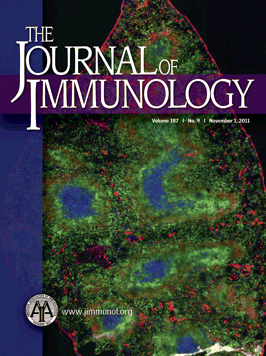 科罗拉多州立大学医学院的研究人员发现了一种特异的分子能够阻止小鼠I型糖尿病的发展,这种分子对来自糖尿病患者的人体细胞具有相似的效果。
科罗拉多州立大学医学院的研究人员发现了一种特异的分子能够阻止小鼠I型糖尿病的发展,这种分子对来自糖尿病患者的人体细胞具有相似的效果。
该发现发表在最新一期的《Journal of Immunology》上,为对抗I型糖尿病及其他诸如风湿性关节炎、多发性硬化及乳糜泻之自身免疫疾病指出了新的、极具前景的方向。
小儿科及医学副教授Aaron Michels与科罗拉多州立大学医学院Barbara Davis中心的执行董事George Eisenbarth对一系列的分子进行测试后发现其中一种能够阻止小鼠的病症的发生。
“我们发现,将特定的分子置于特定的结构性囊中可以阻断糖尿病的形成,”Eisenbarth说。“我们基本上是阻止了这种病症的发生。”
研究人员当时正寻找能填充沿蛋白质结合槽的囊的小分子。一些分子进入这些囊肿抑制了向免疫细胞提供胰岛素,而另外一些加强了胰岛素的提供。
I型糖尿病的特征就是由于自身免疫系统的攻击而不能产生胰岛素。在过去的20年中,这种疾病发生率翻了一番。
Michels和Eisenbarth发现,化合物草甘二膦(Glyphosine)提高了胰岛素的供应并在I型糖尿病转基因小鼠中阻止这种疾病。这种化合物对于人体细胞也有相同的效果。小鼠每日接受该化合物的注射可保持不患上糖尿病,但对已经患有糖尿病的小鼠无效。
研究中使用到的分子是在弗罗里达州立大学医学院的辅助下获得的。
“这不仅提供了一种以有益于糖尿病的方式改变特定免疫反应的新方法,表明我们可以为其他自身免疫疾病修改特定免疫反应,”Ostrov说。“而且也关系到癌症和感染性疾病,这将有益于修正免疫反应,而不是用一般的方法。”
Michels说,有了为期两年半的研究基础,对易于发生I型糖尿病的个体进行遗传学筛选并使用这些化合物开展治疗而阻止病症的发生是可行的。现在,医生们可以预测出90%的I型糖尿病。
“接下来将专注于人类细胞,并开发出用于临床应用的新疗法。这至少要花5年时间。” Michels说。(生物探索)
相关英文论文摘要:
Structure-Based Selection of Small Molecules to Alter Allele-Specific MHC Class II Antigen Presentation
Class II major histocompatibility molecules are the primary susceptibility locus for many autoimmune disorders, including type 1 diabetes. Human DQ8 and I-Ag7, in the NOD mouse model of spontaneous autoimmune diabetes, confers diabetes risk by modulating presentation of specific islet peptides in the thymus and periphery. We used an in silico molecular docking program to screen a large “druglike” chemical library to define small molecules capable of occupying specific structural pockets along the I-Ag7 binding groove, with the objective of influencing presentation to T cells of the autoantigen insulin B chain peptide consisting of amino acids 9–23. In this study we show, using both murine and human cells, that small molecules can enhance or inhibit specific TCR signaling in the presence of cognate target peptides, based upon the structural pocket targeted. The influence of compounds on the TCR response was pocket dependent, with pocket 1 and 6 compounds inhibiting responses and molecules directed at pocket 9 enhancing responses to peptide. At nanomolar concentrations, the inhibitory molecules block the insulin B chain peptide consisting of amino acids 9–23, endogenous insulin, and islet-stimulated T cell responses. Glyphosine, a pocket 9 compound, enhances insulin peptide presentation to T cells at concentrations as low as 10 nM, upregulates IL-10 secretion, and prevents diabetes in NOD mice. These studies present a novel method for identifying small molecules capable of both stimulating and inhibiting T cell responses, with potentially therapeutic applications.







